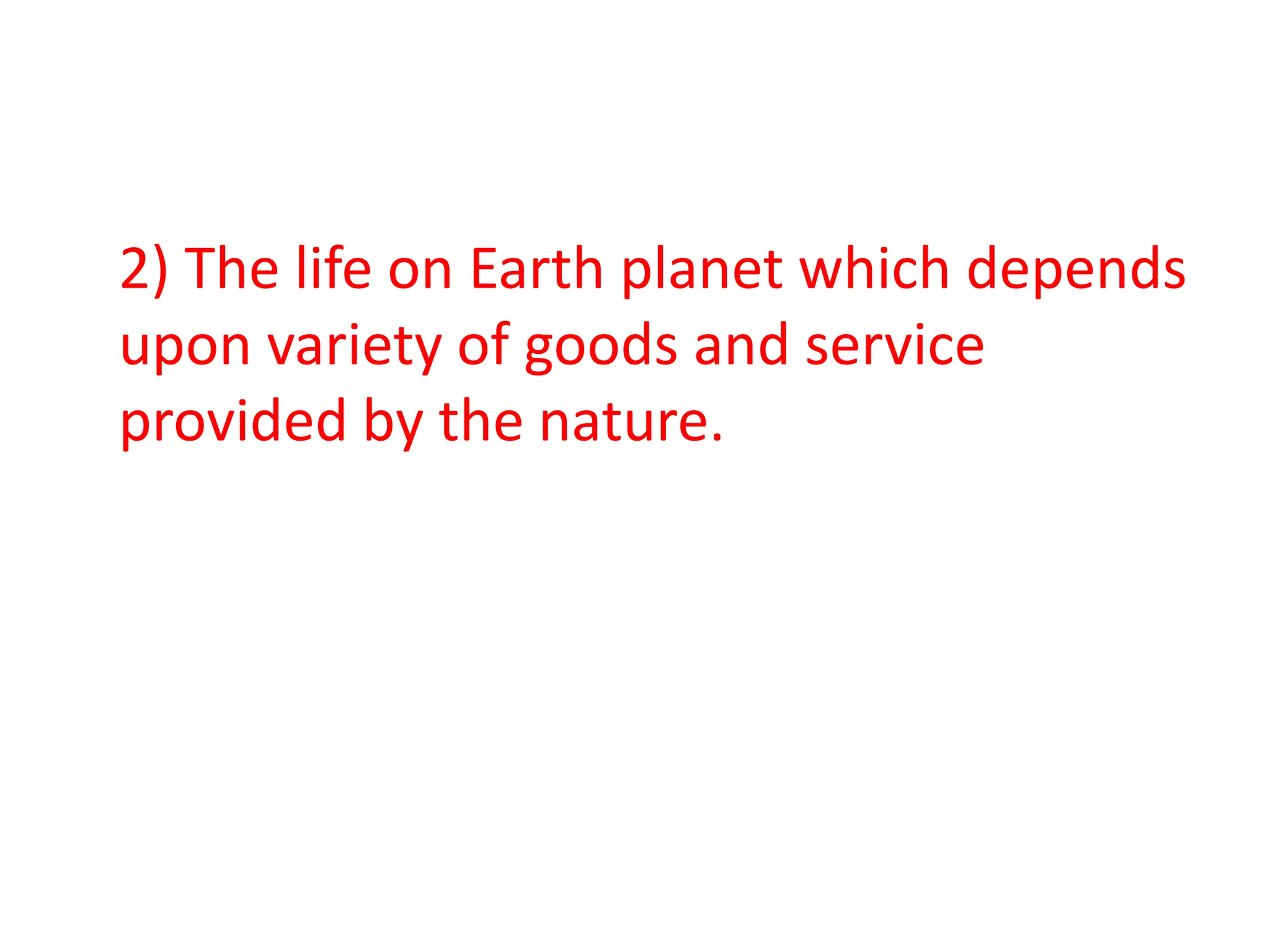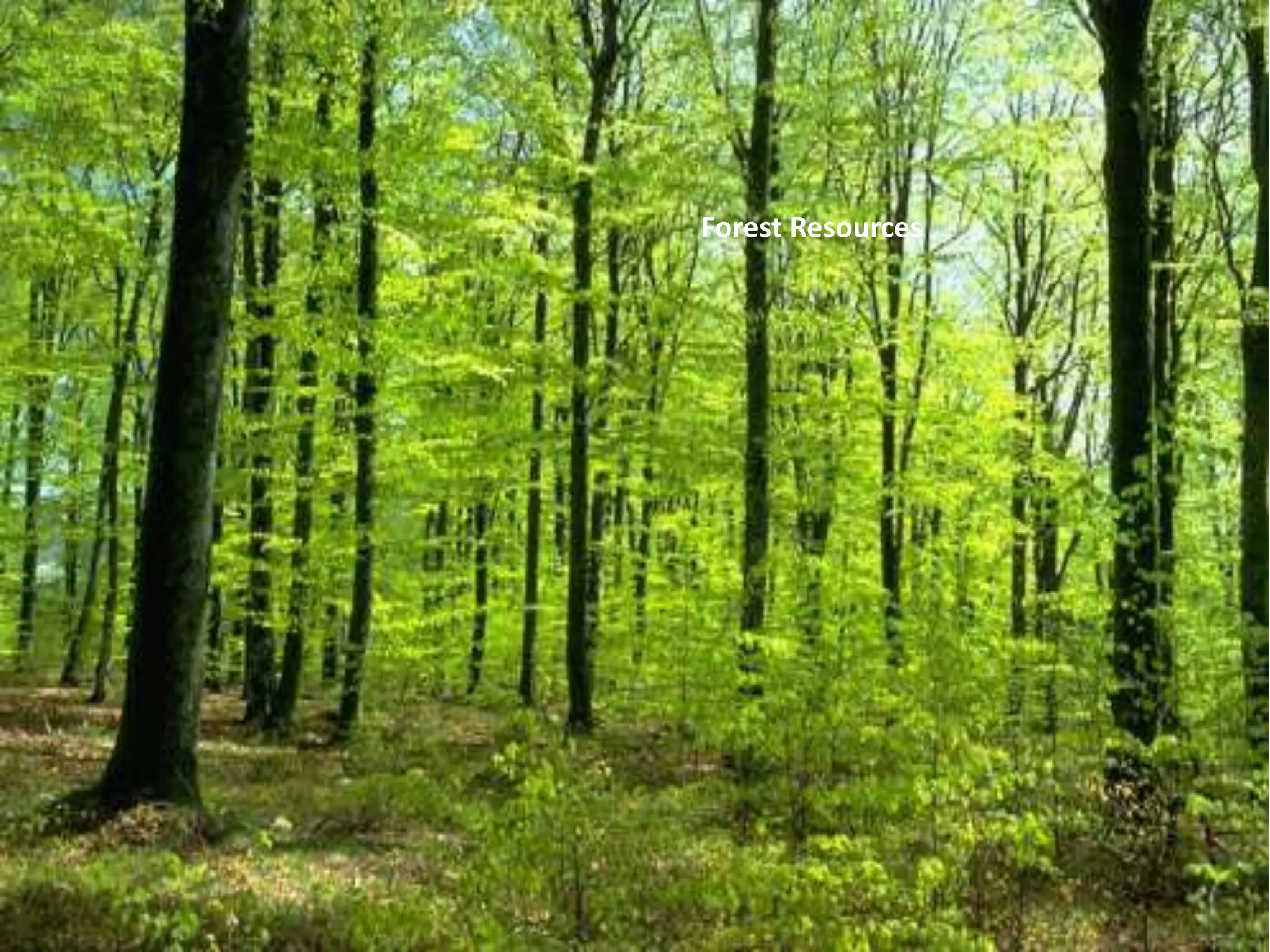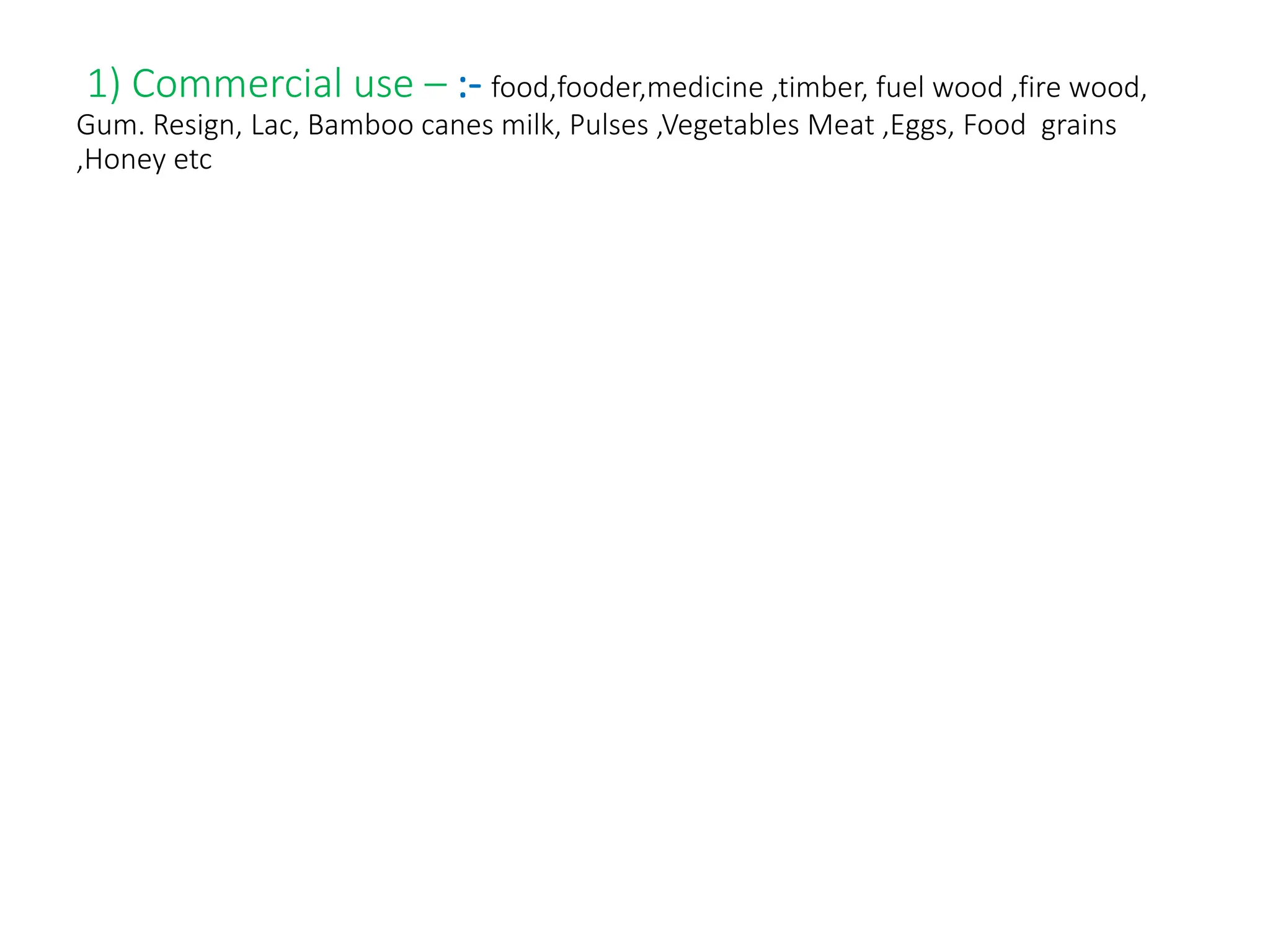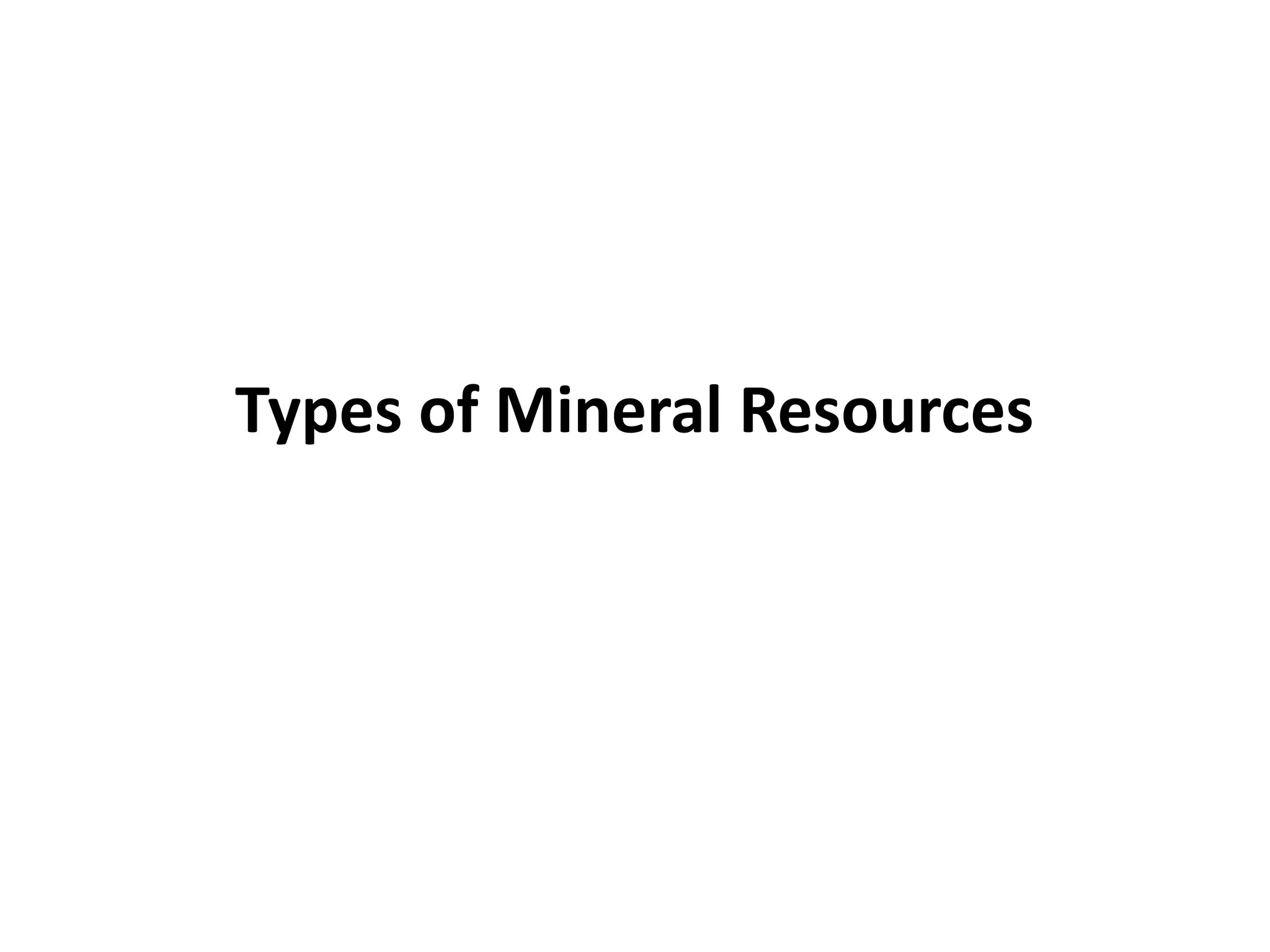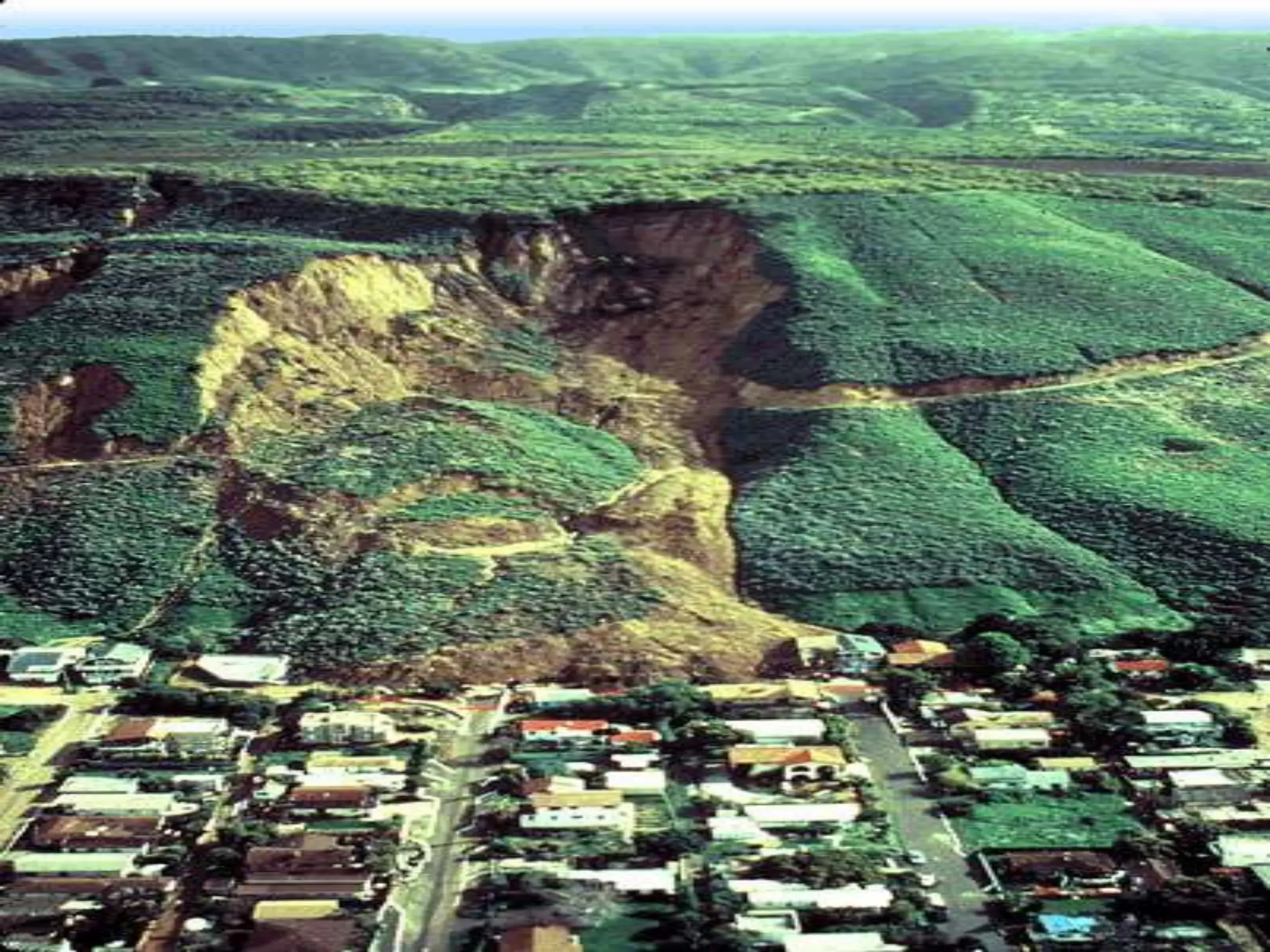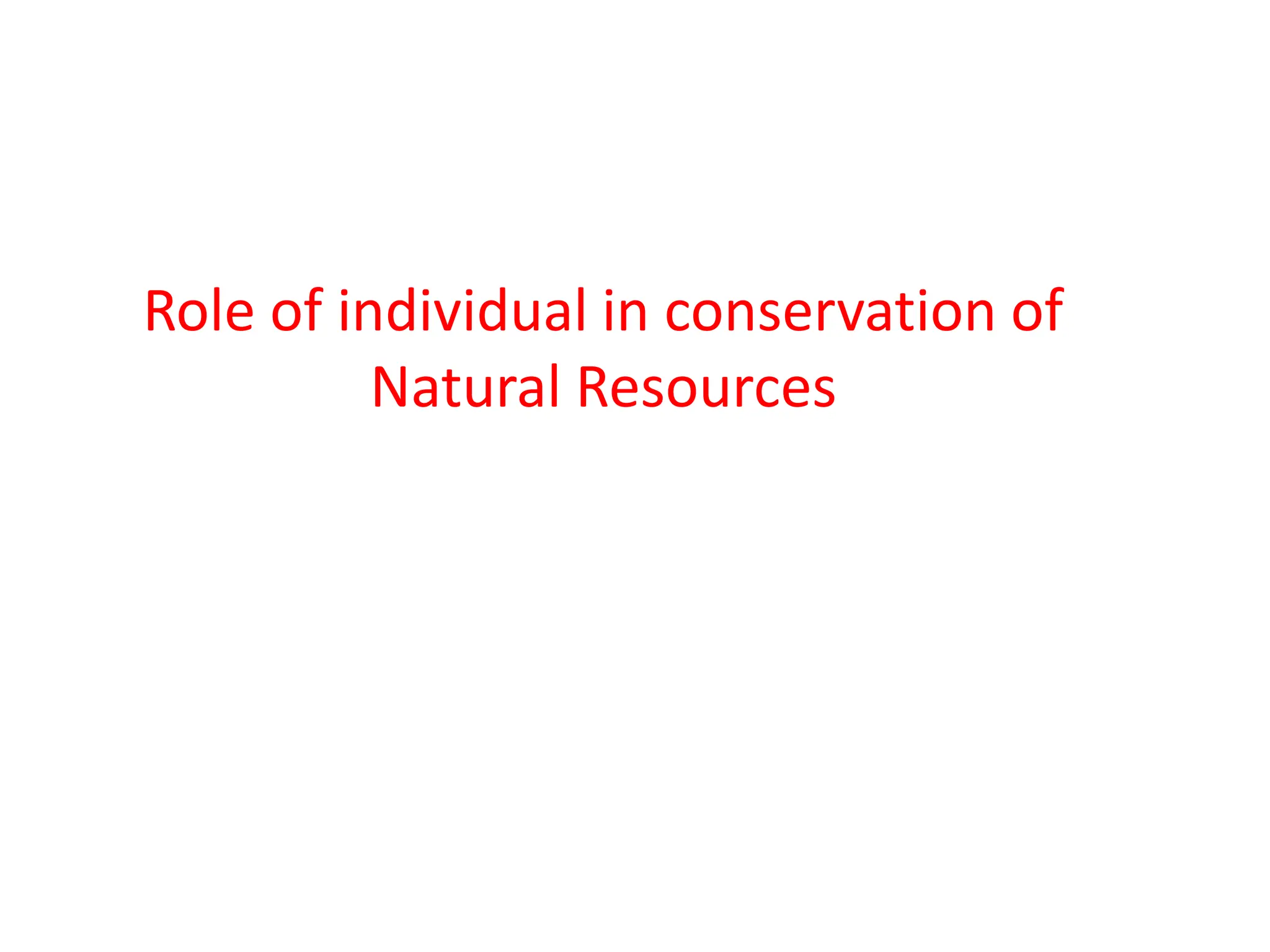This chapter discusses natural resources and associated problems. It defines natural resources as environmental factors that fulfill human needs and improve lifestyle. Resources are classified as renewable like crops and forests, and non-renewable like fossil fuels and minerals. The chapter covers forest resources and the issues of deforestation and dams. It also discusses water resources, mineral resources, food resources, energy resources, land resources, and an individual's role in conservation. For each topic, it outlines uses, problems like depletion, and solutions like regulations and awareness.





